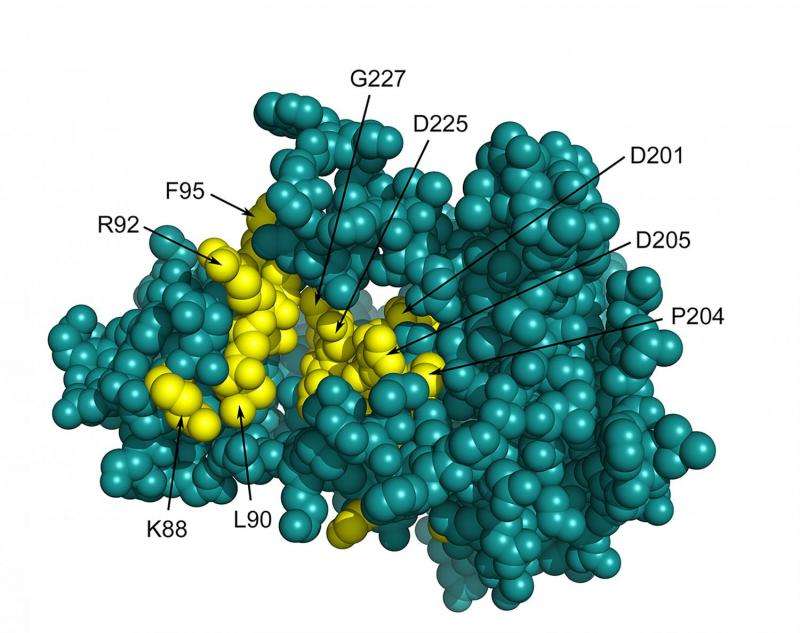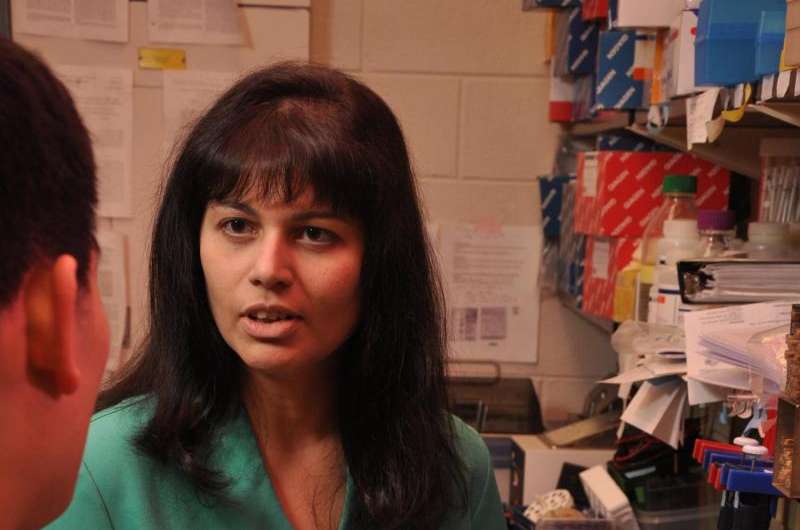Cancer-causing virus mimics host signal to drive cell growth, protein production

As scientists identify ways that viruses exploit their host cells to make more copies of themselves, they are also uncovering clues to how these viral invaders can trigger cancerous cell growth.
In a new study published in the journal Proceedings of the National Academy of Sciences, researchers at the University of North Carolina Lineberger Comprehensive Cancer Center explain how a type of herpesvirus uses mimicry to trick the host cell to produce proteins the virus needs, and to drive cell growth. The findings have implications for how the virus causes cancer.
The researchers report that the Kaposi sarcoma-associated herpesvirus makes a protein called vPK that shares a number of similarities to a host cell protein named S6KB1. The virus manipulates the S6KB1 host cell signaling pathway to spur the host cell to make more proteins and divide - even when the host is not ready for it. The researchers say their findings shed light on a potential cancer-causing mechanism of the virus.
"Cancer is a multi-step process, and to turn a normal cell into a cancer cell, a number of events need to occur," said the paper's senior author Blossom Damania, PhD, co-director of the UNC Lineberger Global Oncology Program and the UNC Lineberger Virology Program. "Some of those steps involve increasing cell proliferation, others involve preventing cell death, and yet others involve the cell evading host immunity. This process usually requires multiple events that target these different pathways before a cell becomes cancerous. We think that different viral proteins are targeting different cell pathways, and the one we identified in this study is targeting cell protein synthesis and cell growth."
Kaposi sarcoma-associated herpesvirus is linked to several types of cancer, including Kaposi sarcoma and two types of lymphomas. People who have a weakened immune system, such as transplant recipients who take immune suppressive drugs or those infected with HIV, are at increased risk of developing Kaposi sarcoma when infected with the virus.
Previous studies have shown that Kaposi sarcoma-associated herpesvirus can make proteins that keep the host cells from triggering its own death, or that prevent warning signals to the body's defense system in response to the virus.

In their new study, the researchers used computer modeling to reveal that the viral protein vPK is structurally similar to a host protein. They also used other biochemical and molecular methods to determine that the two proteins target similar signals in the cell.
Based on those and other findings, Damania and her colleagues concluded that the viral protein mimics the human protein's function, causing the host cell to increase protein production, to divide, and to encourage angiogenesis, a process by which tumors induce blood vessels to fuel them with nutrients.
With such virally-promoted functions relatively unchecked, the researchers believe those functions could contribute to the abnormal cell growth that's characteristic of cancer.
"This viral protein does not contain the same 'checks' that keep the cellular protein in line, so it can perform this function without being controlled by the brakes the cell normally uses to control activity of the cellular protein" said Damania, who is also the incoming vice dean for research at the UNC School of Medicine and the Cary C. Boshamer Distinguished Professor of Microbiology and Immunology. "So essentially, the viral protein can function unregulated, and hence, might contribute to the development of cancers associated with this virus by augmenting cell proliferation."
These findings may also have implications for treatment of viral cancers, said the study's first author Aadra Bhatt, PhD, a postdoctoral researcher at UNC Lineberger.
And although the new findings uncovered the similarity between the viral and host protein, researchers speculate that the virus has been evolving alongside humans and their evolutionary ancestors for millions of years to enable them to commandeer host cell pathways and use the host to their own advantage.
More information: Aadra Prashant Bhatt et al. A viral kinase mimics S6 kinase to enhance cell proliferation, Proceedings of the National Academy of Sciences (2016). DOI: 10.1073/pnas.1600587113
Journal information: Proceedings of the National Academy of Sciences
















